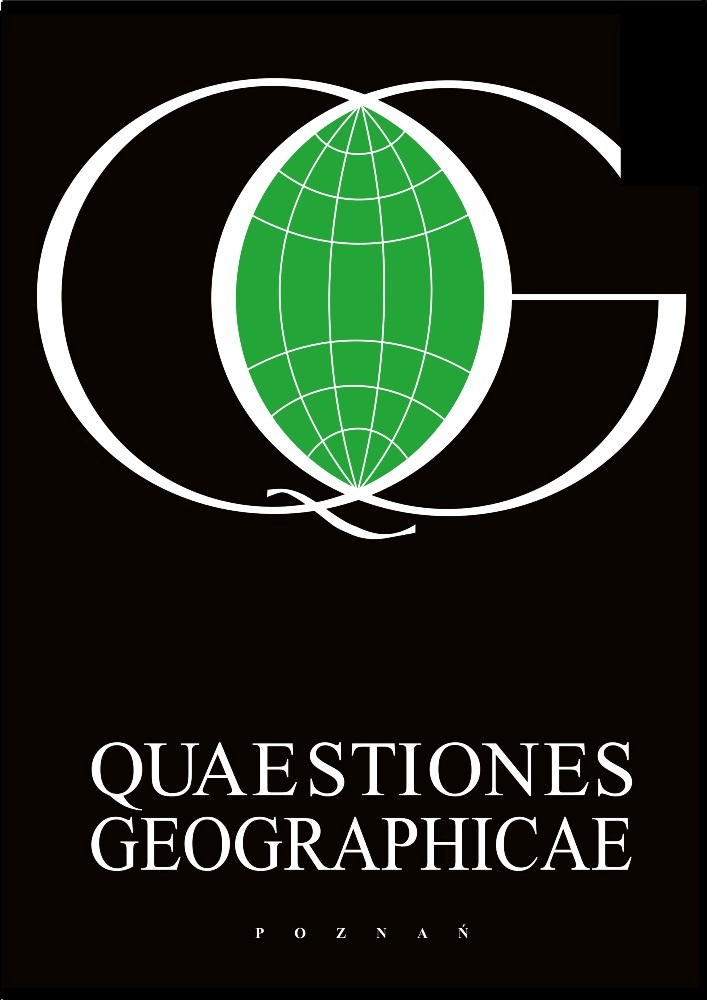Abstract
The purpose of the present paper is to characterise the socio-economic potentials of the regions situated on both sides of the Polish-Russian, Polish-Belarusian and Polish-Ukrainian boundaries (against the background of historical conditions), as well as the economic interactions taking place within these regions. The analysis, carried out in a dynamic setting, sought to identify changes that have occurred owing to the enlargement of the European Union (including those associated with the absorption of the means from the pre-accession funds and from the structural funds). The territorial reach of the analysis encompasses four Polish units of the NUTS 2 level (voivodeships, or "voivodeships"), situated directly at the present outer boundary of the European Union: Warmia-Mazuria, Podlasie, Lublin and Subcarpathia. Besides, the analysis extends to the units located just outside of the eastern border of Poland: the District of Kaliningrad of the Russian Federation, the Belarusian districts of Hrodna and Brest, as well as the Ukrainian districts of Volyn, Lviv and Zakarpattya.
References
Gniezdowskij J. J., Kosiedowski W., 2005, Wstępna ocena konkurencyjności obwodu grodzieńskiego Republiki Białoruś jako regionu przygranicznego. Przegląd Polityczno-Gospodarczy Europy Środkowej i Wschodniej, 12: 163-172.
Harsthorne R., 1936. Suggestions on the terminology of political boundaries. Annals of the Association of American Geographers, 23: 195-228.
Kalinowski T. (ed.), 2007. Atrakcyjność inwestycyjna województw i podregionów Polski 2007. IBnGR, Gdańsk.
Komornicki T., 1999. Granice Polski. Analiza zmian przenikalności w latach 1990-1996 (Boundaries of Poland. Analysis of changes in permeability in the years 1990-1996). Geopolitical Studies Vol. 5, IGiPZ PAN, Warszawa.
Komornicki T., 2007. External border of the European Union - permeability, co-operation, perspectives. In: A. Kovacs (ed.), Regionality and/or Locality. Discussion Papers, Centre for Regional Studies, Hungarian Academy of Sciences, Pecs: 89-103.
Komorowski J., 2002. Internacjonalizacja miast i jej uwarunkowania w Polsce. In: J. Słodczyk (ed.), Przemiany bazy ekonomicznej i struktury przestrzennej miast. Uniwersytet Opolski, Opole: 97-112.
Lijewski T., 1986. Geografia transportu Polski (Transport Geography of Poland). PWE, Warszawa.
Miszczuk A., Trokhimczuk S., 2005. Science and Higher Education. In: B. Kawałko A. Miszczuk (eds), The Polish-Ukrainian Borderland. Environment. Society. Economy. College of Management and Administration, Zamość: 153-162.
Moraczewska A., 2008. Transformacja funkcji granic Polski. Wydawnictwo UMCS, Lublin.
Palmowski T., 2007. Współpraca z Obwodem Kaliningradzkim Federacji Rosyjskiej jako czynnik rozwoju regionalnego. In: Ekspertyzy do Strategii Rozwoju Społeczno-Gospodarczego Polski Wschodniej do roku 2020.Ministerstwo Rozwoju Regionalnego, Warszawa, 2: 71-107.
Powęska H., 2002. Przestrzenny wymiar handlu transgranicznego w Polsce w ostatniej dekadzie XX wieku. Geopolitical Studies, 9, IGiPZ PAN, Warszawa.
Rościszewski M., 1993. Polska i jej uwarunkowania geograficzno-polityczne (Poland: Geographical and Political Condition). In: Conference Papers IGSO PAS, 17: 37-86.
Scenarios on the territorial future of Europe, 2007, ESPON, Luxemburg.
Węcławowicz G., Bański J., Degórski M., Komornicki T., Korcelli P., Śleszyński P., 2006. Przestrzenne Zagospodarowanie Polski na początku XXI wieku. Monografie IGiPZ PAN, Warszawa.
License
This content is open access.
